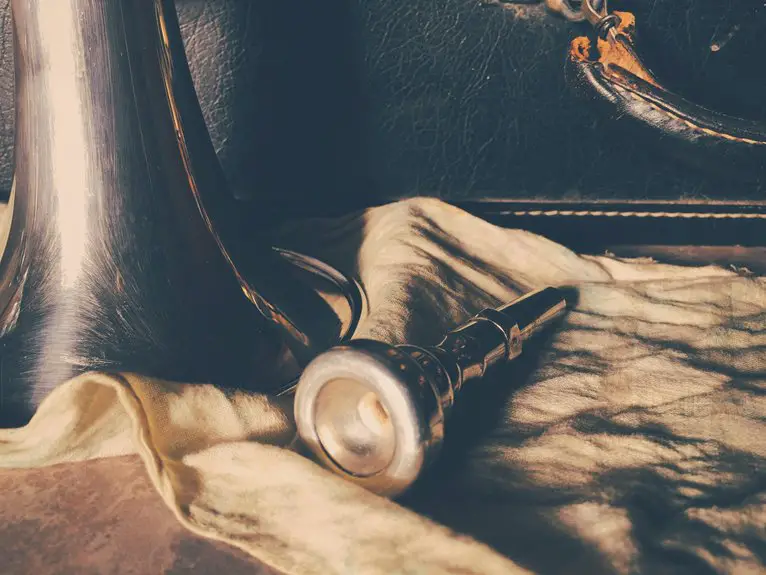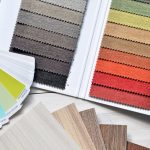Polyester velvet offers you a durable, soft fabric that mimics luxury velvet but resists wrinkles, shrinking, and fading better. It’s budget-friendly, easier to clean, and holds vibrant color, making it great for upholstery and fashion. You’ll want to avoid high heat and respond quickly to spills for best care, and be aware it can trap heat or develop static. If you want to explore its performance, uses, and styling tips, there’s plenty more to discover.
Table of Contents
Key Takeaways
- Polyester velvet is a synthetic fabric mimicking natural velvet’s softness with durable, wrinkle-resistant, and vibrant color-retaining polyester fibers.
- It offers better durability, easier maintenance, and lower cost compared to traditional velvet, making it ideal for everyday use.
- Common uses include upholstery, apparel, drapery, and accessories, valued for its stylish look and high abrasion resistance.
- Care involves regular vacuuming, prompt spill blotting, mild detergent stain cleaning, air drying, and avoiding high heat to prevent damage.
- Polyester velvet is budget-friendly, costing $10-$25 per yard, and is increasingly popular in fashion and interior design for its luxurious appearance.
Understanding the Composition of Polyester Velvet
Although it may look and feel luxurious like natural velvet, polyester velvet is made from synthetic fibers designed to mimic that softness. When you touch polyester velvet, you’re feeling tightly woven polyester threads that create a plush surface with a distinctive pile.
This fabric’s smoothness and sheen come from the way these fibers reflect light, giving it that classic velvet appearance. Because polyester is a man-made material, it resists wrinkles, shrinking, and stretching better than natural fibers.
You’ll also find that polyester velvet is durable and holds color vibrantly, making it a popular choice for upholstery and clothing. Understanding its synthetic composition helps you appreciate why it performs well in everyday use without requiring the delicate care natural velvet often demands.
How Polyester Velvet Differs From Traditional Velvet
Now that you know polyester velvet is crafted from synthetic fibers designed to mimic natural velvet’s softness and sheen, it’s easier to see how the two differ beyond appearance.
When you compare them directly, you’ll notice key distinctions:
- Durability: Polyester velvet resists wear and fading better, making it ideal for everyday use, while traditional velvet, often made from silk or cotton, is more delicate.
- Maintenance: You’ll find polyester velvet easier to clean since it handles moisture and stains with less risk, unlike traditional velvet which requires special care.
- Cost: Polyester velvet offers a budget-friendly alternative without sacrificing style, whereas natural velvet typically comes with a higher price tag.
Understanding these differences helps you choose the right velvet for your needs with confidence.
Benefits of Choosing Polyester Velvet for Upholstery
When you choose polyester velvet for your upholstery, you’re opting for durability that stands up to daily wear and tear.
It’s easy to maintain, saving you time and effort on cleaning.
Plus, its cost-effectiveness means you get a stylish look without breaking the bank.
Durability and Longevity
Because polyester velvet resists wear and tear better than many other fabrics, you’ll find it an excellent choice for upholstery that needs to stand up to daily use.
Its durability guarantees your furniture maintains a fresh look even after years of sitting, lounging, or entertaining.
When you choose polyester velvet, you benefit from:
- High abrasion resistance: It withstands frequent contact without showing damage.
- Color retention: It holds dye well, keeping vibrant hues that won’t fade easily.
- Shape retention: The fabric resists stretching and sagging, preserving your furniture’s form.
With these qualities, polyester velvet offers lasting beauty and strength, making it a smart investment for your home’s upholstery needs.
Maintenance and Cost-Effectiveness
Although some fabrics demand special care, polyester velvet makes maintenance simple and affordable, saving you time and money in the long run.
You won’t need expensive cleaning products or professional services because polyester velvet resists stains and dries quickly. A regular vacuum or gentle brushing keeps it looking fresh, while spot cleaning with mild detergent handles most spills.
Its durability means you won’t replace your upholstery often, making it a smart investment. Plus, polyester velvet’s affordability lets you enjoy a luxurious look without breaking the bank.
When you choose this fabric, you get a stylish, easy-care option that fits your budget and lifestyle perfectly, proving that quality and cost-effectiveness can go hand in hand.
Common Uses of Polyester Velvet in Fashion and Home Decor
You’ll find polyester velvet shining in both fashion and home decor.
It’s popular for apparel like jackets and accessories such as bags, thanks to its rich texture and durability.
In your living space, it’s a go-to choice for upholstery and drapery, adding elegance while standing up to everyday use.
Apparel and Accessories
When you choose polyester velvet for your apparel and accessories, you tap into a fabric that combines luxury with practicality.
It offers a soft, rich texture that elevates any outfit while being durable and easy to care for. Whether you’re dressing up or adding a touch of elegance to everyday wear, polyester velvet fits the bill perfectly.
Here are three popular uses you’ll find in fashion and accessories:
- Evening wear and formal dresses, where the fabric’s sheen adds sophistication.
- Stylish jackets and blazers that provide warmth without sacrificing style.
- Accessories like handbags, scarves, and hats, which gain a plush, fashionable look.
Polyester velvet lets you enjoy luxury without high maintenance or cost.
Upholstery and Drapery
Beyond apparel and accessories, polyester velvet shines in upholstery and drapery, bringing a touch of elegance and durability to your living spaces.
When you choose polyester velvet for your furniture, you get a fabric that resists wear and stains, making it ideal for high-traffic areas. Its rich texture adds warmth and sophistication to sofas, chairs, and cushions, enhancing your room’s aesthetic effortlessly.
For drapery, polyester velvet offers excellent light-blocking properties and drapes beautifully, giving your windows a plush, luxurious look. Plus, it’s easy to maintain, so you won’t worry about frequent cleaning.
Whether updating your living room or adding cozy charm to your bedroom, polyester velvet combines style and practicality, making it a smart choice for home decor.
Durability and Performance Characteristics of Polyester Velvet
Although polyester velvet looks luxurious, it stands out for its impressive durability and performance. When you choose this fabric, you’re investing in a material that resists wear and tear better than many natural fibers.
It’s designed to handle everyday use while maintaining its rich texture and vibrant color.
Here are three key performance characteristics you’ll appreciate:
- High abrasion resistance – Polyester velvet withstands friction, making it ideal for furniture and high-traffic areas.
- Colorfastness – It resists fading from sunlight and washing, keeping your fabric looking fresh longer.
- Moisture resistance – This fabric repels water better than many alternatives, reducing the chance of stains setting in.
With these qualities, polyester velvet offers both beauty and resilience for your home.
Tips for Cleaning and Maintaining Polyester Velvet
Caring for polyester velvet requires just a few simple steps to keep its plush texture and vibrant color intact.
First, vacuum your velvet regularly using a soft brush attachment to remove dust and prevent dirt buildup.
If you spill something, blot it immediately with a clean, dry cloth—avoid rubbing, which can damage the fibers.
For stains, use a mild detergent mixed with water and gently dab the area with a soft cloth. Always test your cleaner on a small, hidden spot first.
Avoid soaking the fabric and let it air dry naturally.
To maintain the velvet’s softness, brush it gently with a velvet brush or a soft toothbrush once dry.
Gently brushing polyester velvet with a velvet brush or soft toothbrush keeps its softness and texture intact.
Following these tips will help your polyester velvet look fresh and luxurious for years.
Potential Drawbacks and Limitations of Polyester Velvet
While polyester velvet offers many benefits, you should also consider its potential drawbacks before choosing it for your space.
Understanding these limitations helps you make an informed decision that suits your needs.
- Heat Sensitivity: Polyester velvet can melt or deform under high heat, so avoid placing it near heat sources or using hot irons directly.
- Less Breathable: Unlike natural fibers, polyester velvet traps heat and moisture, which might feel uncomfortable in warm or humid environments.
- Prone to Static and Pilling: You may notice static cling or small fabric pills forming over time, especially in high-friction areas, affecting its smooth appearance.
Keep these factors in mind to guarantee polyester velvet aligns with your lifestyle and usage expectations.
Comparing Cost: Polyester Velvet Versus Other Velvet Fabrics
Considering polyester velvet’s characteristics, it’s also important to weigh its cost against other velvet options. You’ll find polyester velvet generally more affordable than natural fiber velvets like silk or cotton, making it a budget-friendly choice without sacrificing the velvet look. While silk velvet carries a luxury price tag, polyester velvet offers similar visual appeal for less. Cotton velvet falls in between but can cost more due to its natural fiber content.
| Velvet Type | Approximate Cost per Yard |
|---|---|
| Polyester Velvet | $10 – $25 |
| Cotton Velvet | $20 – $40 |
| Silk Velvet | $50 – $100+ |
This table helps you see how polyester velvet fits as a cost-effective velvet fabric option.
Styling Ideas and Trends Featuring Polyester Velvet
Velvet fabrics, especially polyester velvet, have surged in popularity across interior design and fashion, thanks to their rich texture and versatile style.
You can easily incorporate polyester velvet to elevate your space or wardrobe. Here are three trendy ways to style it:
- Accent Furniture: Use polyester velvet upholstery on chairs or ottomans to add a pop of color and luxury without breaking the bank.
- Bold Fashion Statements: Choose polyester velvet dresses or blazers for a chic, vintage-inspired look that’s comfortable and easy to care for.
- Soft Home Textiles: Incorporate polyester velvet throw pillows or curtains to create a cozy, elegant atmosphere in any room.
Frequently Asked Questions
Is Polyester Velvet Environmentally Friendly or Sustainable?
You won’t find polyester velvet very eco-friendly since it’s made from synthetic fibers derived from petroleum. It’s not biodegradable, but recycling initiatives help. If sustainability matters, you might want to contemplate natural or recycled options instead.
Can Polyester Velvet Cause Allergies or Skin Irritation?
If your skin feels like it’s shouting, polyester velvet might be the culprit. You could experience allergies or irritation since synthetic fibers sometimes trap allergens. Always test a small patch before you plunge into comfort.
How Does Polyester Velvet React to Extreme Temperatures?
You shouldn’t expose polyester velvet to extreme heat since it can melt or shrink. Cold temperatures won’t harm it, but sudden temperature changes might affect its texture, so handle it gently to keep it looking great.
Is Polyester Velvet Suitable for Outdoor Furniture?
Think of polyester velvet as a delicate flower—beautiful but sensitive. You shouldn’t use it for outdoor furniture since it fades and wears quickly under sun and rain. Stick to more durable fabrics to keep your space vibrant.
What Are the Best Tools for Cutting Polyester Velvet Fabric?
You’ll want sharp fabric scissors or a rotary cutter to cut polyester velvet cleanly. Using a cutting mat helps, and pins or fabric weights keep it steady. Avoid dull tools—they cause fraying and uneven edges.
- What Is Polyester Velvet? Performance, Care & Affordability - June 22, 2025
- What Is Cotton Velvet? Characteristics, Benefits & Common Uses - June 22, 2025
- Fabrics Similar to Velvet: Alternatives & Look-Alike Textiles - June 22, 2025






